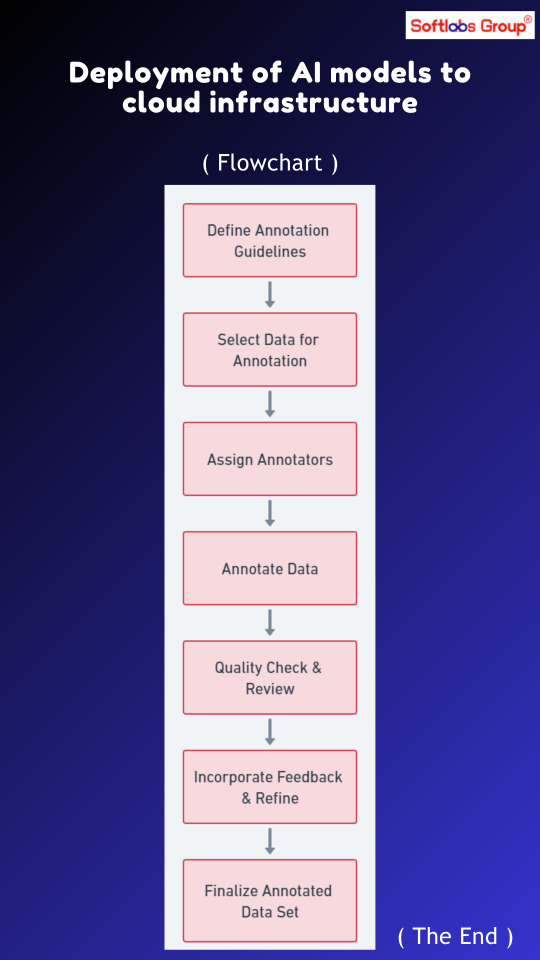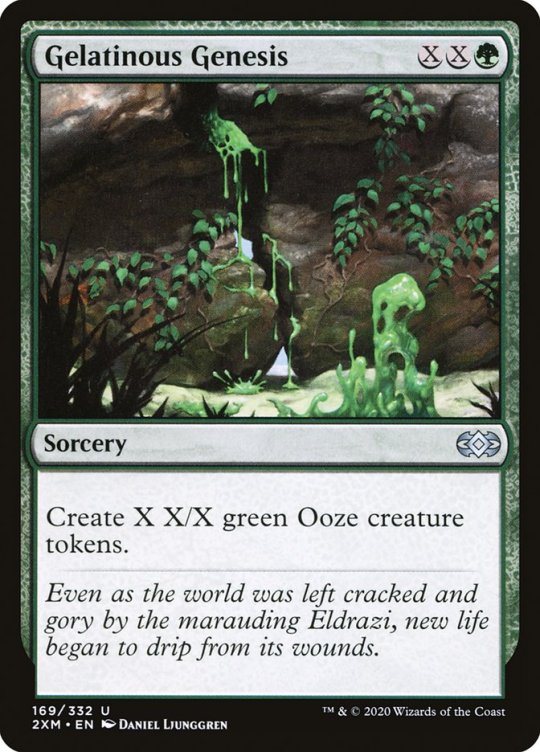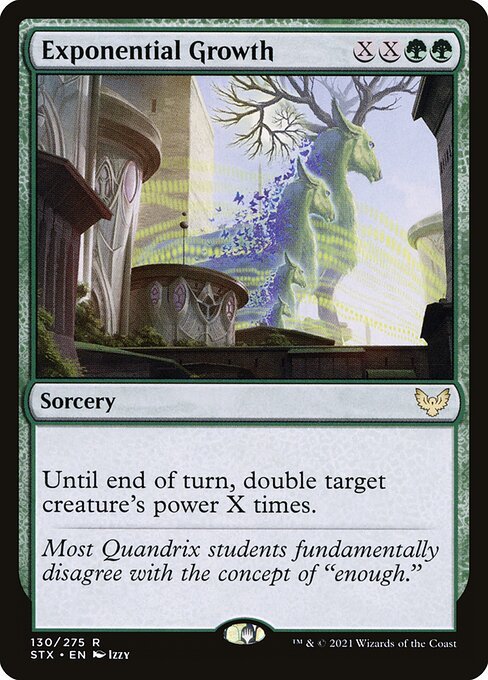#Auto-scaling
Explore tagged Tumblr posts
Text
Scaling Azure Container Apps for Peak Performance
In our last blog, we dove into optimizing deployments with Azure Pipelines, covering strategies for choosing the right agents and securing environment variables to ensure smooth, reliable updates. Now, let’s take things a step further. Once you’ve streamlined your deployment pipeline, the next challenge is making sure your Azure Container Apps can easily handle fluctuating demands. In this final…
#auto-scaling#azure best practices#Azure Container Apps#azure monitor#cloud cost optimization#cloud scaling#container app scaling#dynamic scaling#KEDA#responsive applications#scaling in azure
0 notes
Text
What's new in Azure app service at Build 2024: Key announcements and features

The integration with the Visual Studio improves the development and deployment process of the services and the cooperation with Nvidia and AMD as hardware partners brings high-performance hardware to boost the AI offerings. Read More. https://www.sify.com/technology/whats-new-in-azure-app-service-at-build-2024-key-announcements-and-features/
#AzureAppService#MicrosoftBuild#MicrosoftAzure#Auto-Scaling#SidecarContainers#VisualStudio#Nvidia#AMD MI300X
1 note
·
View note
Text

Visualize the deployment of AI models to cloud infrastructure with our comprehensive diagram. Follow steps including model preparation, containerization, deployment orchestration, scaling, and monitoring. Simplify the process of leveraging cloud resources for efficient AI model deployment. Ideal for cloud engineers, AI developers, and DevOps professionals. Stay updated with Softlabs Group for more insights into cloud-based AI solutions!
0 notes
Text
See this may be a hot take but I just don’t think it’s that important to make sure I see your character’s custom eye mod and make up mod when I play the game
I am way too preoccupied with Avi’s handsome face to care
You understand
#this is about mare and syncshell drama#again#also the idea of random mods auto downloading onto my computer….horrifying to me tbh#like i’m happy to download scales and hair because it’s about the silhouette#for friends#but the lil details? i’ll just enjoy your gposes for that
16 notes
·
View notes
Text

some tarots for @puddleslime it was very fun to attempt the rider tarot style and i learned about screentones
#seas draws#af2024#dnd#changeling#i didnt use a brush for the screentones. i didnt use some tool or plug in. i did a third worse thing!#used auto screentone on a full screen dot pattern then scaled it and rotated it by hand
23 notes
·
View notes
Text
X spells in magic the gathering are where the fact it was designed by a maths guy really pops. Majority of the maths in magic is "can I pay cost" or "is damage dealt enough to kill a creature/player", so playing around with that number being variable rather than fixed makes some sense, and maths has X as a default variable, so you get fireball

right there in the first set - variable cost for variable damage, 1:1. This spell is great for ending games, which makes up for it's poor rate for the time (see lightning bolt, where you pay 1 mana for 3 damage)

So now you can use X for the cost to give a linear scaling effect, such as additional counters on creatures


Where we get really mathsy next is the relatively few examples of effectively "do something X times, X times" for example:


These two cards are roughly equivalent in what they do to the previous two - but appear to scale at a much worse rate, having to pay two or three times the cost for each time you do "X" but the trick here is these aren't actually scaling linearly, they're scaling quadratically, making them much more effective than they seem.
Anyway all this to say that sometimes evaluating how good a magic card can require understanding quadratic scaling!*
*but almost never will because these effects are almost certainly intentionally costed too highly and attached to traditionally uncompetitive effects, likely so that players don't actually have to think about quadratic scaling. This is probably for the best. Also there's one card that scales exponentially (2 to the power of X) rather than quadratically (X to the power of 2). It's literally called exponential growth.

#mtg#magic the gathering#quadratic scaling#richard Garfield phd was a maths professor but maths guy gets the point across#exponential growth#maths#just throwing tags on here. hashtag whatever#i hope this auto does read more. sorry if this has taken forever to scroll past.
51 notes
·
View notes
Text
god all my recent listings on my website somehow have the fucking blurriest photos in the world. something in the upload is fucking compressing the shit out of my pictures because they are CLEAR and CRISP and ZOOM-INABLE on both my ipad & phone…. bigcartel you got a big storm comin (i sent them a message about it 😑) (can’t make me look like a FOOL with BLURRY PRODUCT PHOTOS)
#i went into the shop creator to look for an auto-scale or even suggested dimensions setting but there’s nothin#and none of my googling got me results either… maybe they’re nerfing me specifically…..#chatpost
5 notes
·
View notes
Note
The height chart gets even funnier when you consider that Rick gives Kirby piggyback rides. Kirby, that hamster is only up to your feet.


i think that for reasons to do with this the earth accurate sizes doesn't actually work very well when you try to extrapolate it out, and i did intend it as a joke!! it's funny and i enjoy it, but it falls apart the second you try to consider them functioning with others 😂
like... is kirby small enough to be comfortably piggybacked by hamster sized rick? then he's too small to be held in coo's claws, let alone to fit in kine's mouth! this would likely be the case even if we just took kirby's "canon" size of 8-9 inches but plonked him in an earth accurate sizing for everything else
then, is king dedede a penguin accurate size (king penguin size: 85–95cm) or is he comparative to a human adult? either way, he'd be smaller than kine, as mola mola average 250cm tall (at least according to wikipedia. other sources say 300cm longs and up to 450cm tall) and easily dwarf humans here on earth.
or does dedede have to be comparative to kirby, who is comparative to rick, who is an 18cm tall hamster, making kirby probably 10cm at best, making dedede probably half the size of a king penguin though maybe closer to a blue penguin (45cm), meaning that kine could easily be up to ten times his height--
in general i kind of just prefer to size them comparatively, starting from kirby, and considering individual characters Bigger or Smaller. as much as i'd love to see an enormous semi-realistic sunfish kine basking happily in the ocean surrounded by tiny friends, i think that it's easier for me to work on a "kirby" size scale and consider them all aliens, at the end of the day 😂

this seems likely, given that female mola mola are apparently bigger than the boys! they can also supposedly spawn an absolutely mindboggling three hundred million (sorry. hang on. three HUNDRED million!?!?!?!?!) eggs at a time, so i hope you're all really really looking forward to seeing a Lot lot more of Kine around.
#you could work in a sort of 'kirby auto scales to his animal friends' mechanic i suppose. he's certainly been tinier before!#that could be enjoyable in a world building sense! you'd see many small items look BIG when you were with rick and vice versa with kine!#but i'd feel bad assigning enormousness to kine! he'd be quite difficult to get into just about any location and he's already a bit of a#dare i say#fish out of water#definitely fun to play around with in individual circumstances but hard to work into a broader world-scape. not impossible though!#asks
28 notes
·
View notes
Text






1948 Ford Super Deluxe Convertible Coupe
Issued by Auto-Buff Models. It is 1:43 scale and crafted in white metal. The model was built by Wayne Moyer and is from his collection. It is finished in Maize Yellow.
5 notes
·
View notes
Text

basic threshold png of the first badge from this post.
#I really love this design. wanna make a shirt with it purrhaps.#I started trying to make a vector out of it but couldn't quite figure out a pleasing way and I'm tired now so I'll try again tomorrow maybe#anyone have any suggestions for how to get a clean smooth vector out of this? the low resolution is a bit of an obstacle.#I might try scaling up the original image by some method then thresholding it and auto-tracing the result of that. idk.
49 notes
·
View notes
Text






When I can't drive yet, I already have a mini garage of my own haha, which has a mechanic, an engine, and a vintage garage with glued so many nice pictorials. This garage is 1:64 real scale, 1:64 American-style garage miniature scene model.
#Nostalgic Garage#Miniature Model Scene#Miniature Garage Scene#Garage Collectibles#DIY Garage Model#Auto Repair Miniature#1:64 Scale Garage'American-style Garage#Car Tuning#Garage Decor#diorama#miniature
3 notes
·
View notes
Text

#trevor philips#gta 5#doodle#scrapbook#scribble#quick sketch#small scale#drawing#sketch book#figure drawing#character drawing#grand theft auto#rockstar games#gaming
18 notes
·
View notes
Text
Book Your FREE Consultation (619) 661-1888 Ext. 201 / 206. for Best Certified Scale Service in San Diego

Introduction
If you're a truck driver, fleet operator, or logistics manager, you know the importance of keeping your vehicle weight in check. Whether it’s for compliance, safety, or efficiency, working with a Certified scale service in San Diego is non-negotiable. That’s where Truck Net LLC comes in a trusted name for delivering precision, professionalism, and peace of mind.
With a legacy of excellence, Truck Net has carved out its space as the Best Certified scale service in San Diego and beyond. And guess what? You can Book Your FREE Consultation today at (619) 661-1888 Ext. 201 / 206.
Why Certified Scale Services Matter
In the trucking and transport industry, weight matters a lot. Overloading doesn’t just damage vehicles; it can cause accidents, violate DOT regulations, and lead to expensive fines. With Certified scale service in San Diego, you’re getting:
Accurate, legal-for-trade weight measurements
Compliance with California and federal regulations
Proof of weight tickets for freight contracts
Confidence that your operations are running smoothly
Truck Net, LLC – One-Stop Truck Stop in San Diego County
When it comes to a full-service truck center, Truck Net is the go-to choice in the region. It’s more than just a weighing station it’s the ultimate destination for professional drivers who value speed, accuracy, and customer care.
Here’s what sets Truck Net apart:
Best Certified scale service in San Diego county
Fast and reliable truck weighing with digital accuracy
DOT-certified staff and calibrated equipment
Competitive pricing with no hidden charges
24/7 service availability
Convenient location for quick drive-in access
What Makes Truck Net the Best Certified Scale Service in California
1. Certified Accuracy
Truck Net operates fully certified scales, approved by both state and national regulatory bodies. These scales are regularly calibrated and tested to ensure precision with every load.
2. Expert Technicians
Their team is made up of trained and certified experts who understand the importance of compliance and customer satisfaction. Whether it’s a single truck or an entire fleet, you're in capable hands.
3. Comprehensive Truck Services
Truck Net isn’t just about weighing. It’s a full-service center offering everything from repair and maintenance to rest stops for long-haul drivers. It’s a one-stop-shop for every trucker’s need in San Diego County.
Free Consultation – How to Book
Getting started is simple. Just call (619) 661-1888 Ext. 201 / 206 to Book Your FREE Consultation and discuss your needs with a professional.
Whether you’re new to San Diego or a regular on the route, Truck Net’s experts will help guide you on the best solutions for your trucking operation.
Serving All of San Diego County and Beyond
No matter where you are in Southern California, Truck Net’s strategic location and unmatched services make it the smart choice. Businesses across the region rely on Truck Net for:
Weighing individual trucks or entire fleets
Re-certification of equipment
Digital reports and proof of compliance
Speedy turnaround to keep drivers on the road
Truck Net Supports All Types of Drivers
From long-haul freight drivers to RV travelers, Truck Net provides the Best Certified scale service in San Diego for:
Professional Truck Drivers
Fleet Managers and Logistics Firms
Owner-Operators
Leisure Drivers with RVs and trailers

Why Choose Truck Net Over Other Scale Services?
Precision – Truck Net’s scales are rigorously maintained and certified.
Convenience – Easy drive-in access and minimal wait times.
Affordability – Transparent pricing with zero surprise fees.
Reputation – Known as the Best Certified scale service in California.
Customer Service – Friendly staff that’s always ready to assist.

Top Benefits of a Certified Scale Service in San Diego
Stay Compliant with DOT Regulations
Avoid Overloading Fines
Improve Road Safety
Ensure Accurate Freight Rates
Gain Trust from Clients and Carriers
Real-Life Scenarios Where Truck Net Made the Difference
Imagine hauling a load across state lines and being pulled over for an inspection. With a certified weight slip from Truck Net, you’re covered. Their accurate weighing services have saved countless clients from expensive fines and delays.
Testimonials from the Road
“Truck Net is the only place I trust for accurate weighing. Their team is friendly, fast, and always professional.” – Mike R., Owner-Operator
“We send all our fleet drivers to Truck Net. Their service is unmatched and the team really knows their stuff.” – Logistics Coordinator, San Diego
“I was new to hauling trailers with my RV and had no idea how weight limits worked. Truck Net walked me through it all.” – Carla M., Leisure Driver
Conclusion
Choosing the Best Certified scale service in San Diego isn’t just about ticking a box it’s about protecting your business, your vehicle, and your bottom line. Truck Net LLC offers trusted, certified, and efficient weighing services to keep you safe, legal, and on the move.
Don’t risk fines, delays, or unsafe loads. Call now to Book Your FREE Consultation at (619) 661-1888 Ext. 201 / 206 and experience the gold standard in truck scale services.
FAQs
1. Are the Truck Net scales certified by the government?
Yes, Truck Net’s scales are certified and comply with both California and federal standards.
2. Can I get a printed weight ticket for legal use?
Absolutely! Truck Net provides official weight tickets that are valid for inspections, contracts, and regulations.
3. Is the consultation really free?
Yes, just call (619) 661-1888 Ext. 201 / 206 to schedule your free consultation.
4. Do I need an appointment, or can I walk in?
While appointments are preferred, walk-ins are always welcome at Truck Net.
5. What else does Truck Net offer besides scale service?
Truck Net is a full-service truck stop offering repairs, maintenance, rest areas, and more for all types of drivers.

Truck Net LLC
8490 Fountain Avenue, San Diego, CA 92154 CALL US: (619) 661-1888 Ext. 201 WORKING HOURS: Monday to Sunday: Open 24 hours Visit our website: https://www.trucknetllc.com/service/scale-3
#Truck Washing services in San Diego#Duty Free Fuel in San Diego#Truck Parking in San Diego#Ultra-low sulphur diesel in San Diego#Duty Free Fuel in California#Truck Lube in San Diego#Duty Free Diesel in San Diego#Truck wash in San Diego#Low Sulfur Diesel in San Diego#Commercial Truck Parking in San Diego#Best Ultra low sulphur diesel in San Diego#Truck storage yard San Diego#Truck washing services in California#Best Truck Parking Station in San Diego#Best Truck wash in California#Best Truck Parking Station in California#Best Truck wash in San Diego#Best truck stop services in San Diego#Truck and auto storage yard California#Truck Parking station in California#Best Truck stop in San Diego#Commercial Truck Parking in California#Certified scale service in San Diego#CNG Station in San Diego#California#Truck washing services in San Diego California#Best Certified scale service in San Diego#Truck and auto storage yard San Diego#Truck Parking station in San Diego#Best truck parking station in San Diego
0 notes
Text
Il parcheggio multipiano
Quante volte abbiamo usato un parcheggio multipiano? Questa tipologia di parcheggio è, in generale, presente nel centro delle città, dove le aree edificabili sono molto costose ed è obbligo realizzare un parcheggio multipiano sviluppato in altezza (fuori terra) o in profondità (interrato). In alcuni parcheggi multipiano fuori terra di non recente costruzione l’ubicazione sia degli ingressi e…
#ascensori#auto#casse#ingresso#ingresso pedonale#parcheggio#parcheggio interrato#parcheggio multipiano#parcheggio vuoti terra#percorso#piano#scale antincendio#uscita
0 notes
Text
Global warming so atrocious it was fucking 80 degrees Farenheight a few days ago
Christmas is in like 3 days
We’re not just cooked, we are actively cooking (the planet alive)
#auto’s insanity#probably has something to do with#the richtor scale bombs being dropped#in the middle east#im just about done#being hopeful about it
1 note
·
View note
Text
I wish i knew how to actially code/ make text to speech voices because i would LOVE to have a good multi-lingual speech engine. Rhvoice generally is good for what i use it for, but punctuation doesn't tend to affect tone much (if at all), and there's only an option to let voices approximate english (not any other language).
Also rhvoice doesn't have a very wide range of voices for most languages anyways.
It'd just be nice to have an open source, free, speech engine for android, that also isn't difficult to contribute voices to. (Partially because i want belarusian tts to use on my phone for aac & such...... lol)
#100% секретный дневник левы НЕ ЧИТАЙ#like yes AI Bad but if there was like... a small-scale ethical way to auto-generate languages based on audio files that would be great!#also like. maybe something similar to how you make utau voices? but for tts?! i'd love that! i just.... cant code that way :(
0 notes